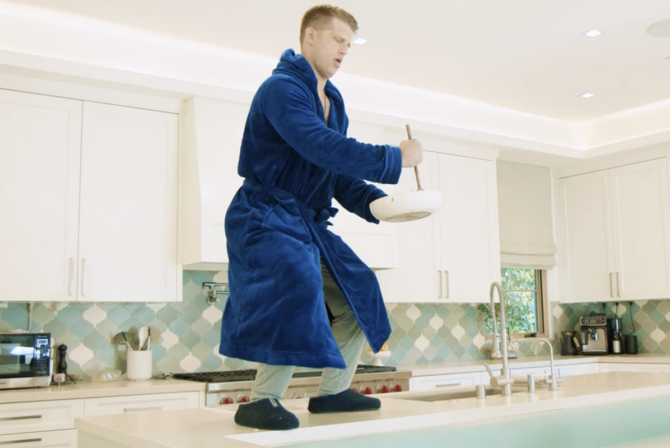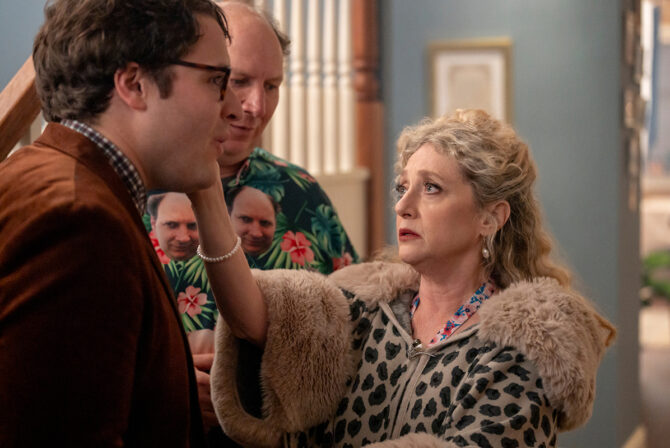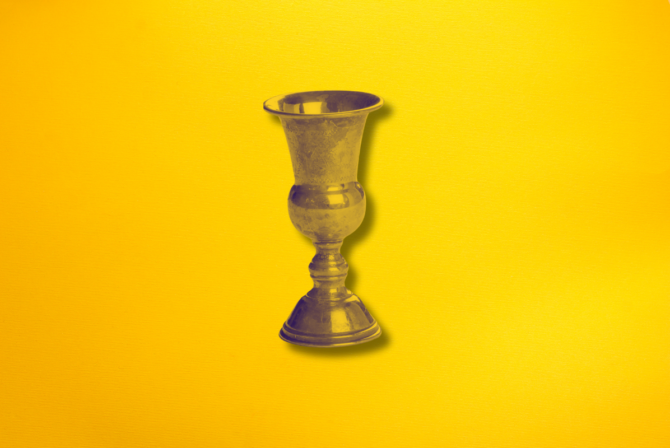We were at family yoga at the YMCA when Ronia started complaining that her thigh hurt. The yoga teacher, an infinitely patient soul with a hilariously incongruent voice that sounds like she’s been smoking a pack a day since 1975, had us in a mildly challenging pose, and Ronia, along with two other kids in the class, suddenly piped up that it hurt. The complaint came back three more times during the course of the 45-minute class. Each time we stopped and did a brief examination, her leg appeared to be fine. I wondered if she had pulled a muscle, or had a bruise somewhere that we couldn’t see.
The class moved on, and eventually we came to inversions i.e. going upside down. This is my favorite part of any yoga class, and Ronia’s, too. She loves headstands, and often practices them at home. When I showed her how to get in a handstand she was a little trepidatious, but with a quick spot she was up against the wall in a nice strong handstand. After a moment she came down, and then she said, “Ow! My shoulder really hurts!”
“Ah!” I thought. I know that exact feeling. After an intense yoga practice, I go up into a handstand, and when I come down I feel the work in my shoulder. It makes sense: for a few minutes my arms and shoulders held up the full weight of my body, and when that was over, I can totally feel the fatigue in the muscles. But it’s not hurt, really. It’s work. It’s power in my body.
I also thought about how it wasn’t until college that I came to enjoy that feeling of work and power. All through my childhood and adolescence, exercise was something I associated with discomfort, and often shame. In gym class at school we played endless rotations of sports I was bad at, plus the presidential physical fitness tests at the beginning and end of the year, handy ways of marking just how unfit I was. I was signed up for gymnastics classes, which I liked, but it was clear I was never particularly good, and I stopped going in about fourth grade.
Gym class and all things fitness related were, as far as I was concerned, awkward places for me to feel uncomfortable and bad about myself. Since I was fully able to do that just about anywhere, there was never any incentive to make any effort to do it via sports.
In college, I suddenly learned the pleasures of going to the gym alone. I ran the track while listening to my favorite songs. I leafed through trashy magazines while on exercise bikes. I finally got the thrill of feeling like I was doing something good for my body, and feeling good, strong, and happy at the same time.
Since college I’ve been a very regular gym-goer. I do it all–group classes, zoning out on the elliptical, free weights, and, when I’m feeling flush, even personal training. I also use my bike and my two feet as my primary mode of transit and make sure to hit my 10,000 steps/day goal. I do all of these things because I know that they can be uncomfortable, even a little painful in the moment, but that they make me feel better in the long run. They make my body feel good and strong, and they affect my mood in huge important ways. I’m a happier better stepmom when I’ve exercised.
I want Ronia to get all those benefits of exercise, and I don’t want her to have to wait until college to realize how great they can be. But I realize that means she’s going to have to learn that sometimes being uncomfortable is good.
For now, we’re taking it easy–we go to the pool as often as we can, because Ronia loves swimming, and never complains that it hurts. We’ll continue to go to family yoga, and sometimes do family yoga Youtube videos at home. We’ll take her complaints seriously, but assuming she’s not injured we’ll push through and make sure we get exercise and feel our bodies working and getting stronger. We also talk about checking in with our bodies–what feels good but hard? What feels bad? What hurts because we’re injured, and what hurts because we’re just working hard?
I’ve been feeling really stressed about how to teach and model these things to Ronia, but then I realized they’re things we learn not just around exercise and bodies, but around our whole lives. Ronia’s going to learn to how good it feels to work through something challenging. She’s done it already with reading, writing, and riding a two-wheeler. She’ll do it with this too. And so will I.
Like this post? Get the best of Kveller delivered straight to your inbox.







